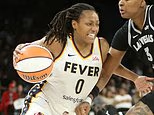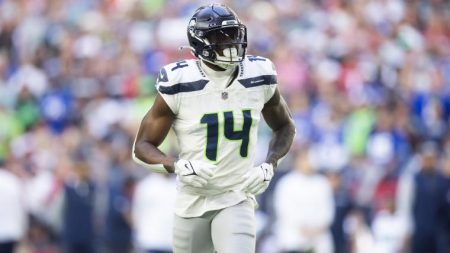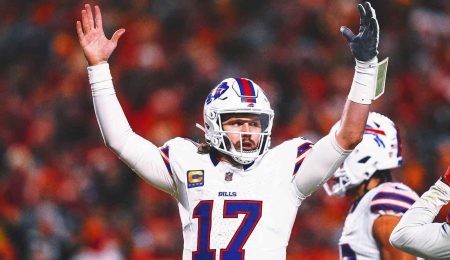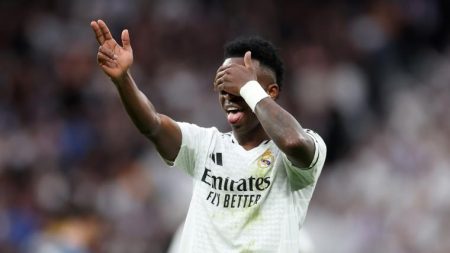Joel Klatt: A Reflection on the 2025 NFL Draft Combine
A Critical Perspective on the NFL Scouting Combine
As the 2025 NFL Draft Combine wrapped up, it’s time to reflect on the event’s significance and its impact on the draft evaluation process. Joel Klatt, FOX Sports’ lead college football analyst, has always had mixed feelings about the combine. While he acknowledges its role as a touchpoint to confirm what has been shown on film and a platform for teams to meet with players behind the scenes, he remains skeptical about the overemphasis placed on it. Klatt sees the combine as an entertainment spectacle, but he warns against reading too much into the athletic testing results. The event has taken on a life of its own, transforming into aחסר high-stakes show, but it’s essential to remember that it’s just one part of the broader evaluation process.
Golden’s Phenomenal 40-Yard Dash
One standout performance at the combine was that of wide receiver Joshua Golden. His 4.29-second 40-yard dash turned heads and is likely to raise his stock significantly. Golden’s speed is a game-changer, and it’s not just a one-dimensional track star ability. He has demonstrated his playmaking skills and was a key target for Texas in the passing game by the end of the season. Klatt points out that having a fast, reliable wide receiver is crucial for any team’s success. Moreover, Texas has a history of producing fast players, with five Longhorns posting sub-4.4 40 times in recent combines. Golden’s speed, coupled with his playmaking ability, makes him a highly sought-after prospect.
Jalen Milroe’s Mixed Bag of Results
Quarterback Jalen Milroe’s performance at the combine was a mixed bag. While Milroe is known for his inconsistency, his top-end talent and athletic ability are undeniable. Klatt believes Milroe is tailor-made for the combine due to his unique traits. Although Milroe did not run the 40-yard dash, his throwing performance drew attention. Klatt describes Milroe’s throwing session as awe-inspiring, akin to watching "an Adonis" in action. Milroe’s ability to do things that other players can’t is a significant selling point. However, Klatt also notes that Milroe’s inconsistencies, particularly in crucial games like the one against Michigan, will be a point of concern for evaluators. Despite this, Milroe’s potential is too high to ignore, and teams might be willing to take a chance on his raw talent.
The Decision to Opt Out
Some top prospects, such as Cam Ward and Shedeur Sanders, chose not to compete at the combine. Klatt defends their decision, arguing that there’s little upside for these players to participate. The combine’s disjointed setting, where quarterbacks throw to unfamiliar receivers running new routes, is not conducive to showcasing their best skills. In such a high-pressure environment, the risk of a poor performance outweighs the potential benefits. Klatt likens this to a blackjack player with a strong hand being told to split their cards—there’s no incentive to take unnecessary risks. For top prospects like Ward and Sanders, sitting out the combine was a strategic decision that makes sense.
Ohio State Running Backs Make Their Mark
The combine also saw impressive performances from Ohio State running backs TreVeyon Henderson and Miyan Williams. Both players excelled in the speed and measurement checkpoints, confirming their abilities on the field. Henderson clocked a 4.43-second 40-yard dash and had a 38.5-inch vertical jump, while Williams ran a sub-4.48 40 and had a 38.5-inch vertical as well. Klatt was particularly intrigued by the measurements of Williams, who stands 6-2 and 221 pounds. Both players showed great explosiveness and athleticism, which aligns with their on-field performances. Despite sharing the load due to injuries on the offensive line, Henderson and Williams had successful combine runs, and Klatt predicts they could be off the board by the end of the second round.
The Two-Way Debate: Hunter vs. Shohei Ohtani
One of the most intriguing discussions at the combine centered around Jaxon Hunter, a talented two-way player for Texas. When asked whether being a two-way player in football is more challenging than Shohei Ohtani’s dual roles in baseball, Hunter argued that football’s physical demands make his job harder. Klatt, with his background in both football and minor league baseball, offers a nuanced perspective. While he acknowledges the physical toll of football, he emphasizes that Ohtani’s two-way prowess is more challenging due to the vastly different skill sets required for pitching and hitting in baseball. Klatt believes Hunter’s success in football is due to his exceptional fitness and the overlap in talents required for both wide receiver and defensive back. However, Ohtani’s ability to excel in two completely different sports is a rare and remarkable feat. Despite this, the combine was a good weekend for Hunter, who measured in at 188 pounds, reinforcing his potential as a two-way player in the NFL.
Conclusion
The 2025 NFL Draft Combine provided valuable insights into the prospects’ athletic abilities and traits, but it’s crucial to maintain a balanced perspective. While standout performances like Joshua Golden’s 40-yard dash and the explosive runs by Ohio State’s running backs can boost their stocks, the combine is just one piece of the evaluation puzzle. Joel Klatt’s insights highlight the importance of balancing physical testing with on-field performance and the strategic decisions prospects make in managing their draft prospects. As the draft approaches, these evaluations will continue to shape the decisions of teams and the futures of these talented athletes.











